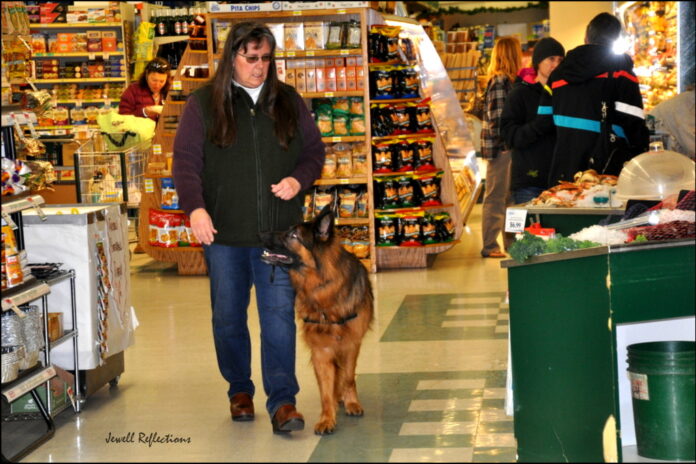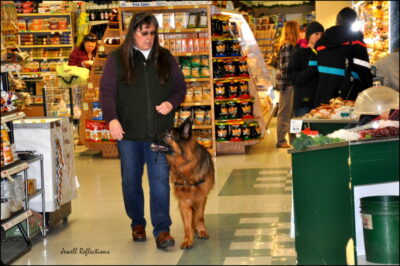
By Fran Jewell

So often, we take our puppy to a puppy class that lasts from 4 to 8 weeks, and then feel we have done what we need to do to teach our puppy skills for a lifetime. While that class or private instruction is imperative to having a well-behaved dog, it is only part of the equation.
There are essentially four phases of training to a fully trained dog. Some of these phases are short in duration, others must continue for the lifetime of the dog.
The first phase is the actual “teaching” phase, which shows the dog what the behavior is that we want. Those behaviors can be the basics, such as sit, down, or come, or even more complex commands like directional—going right and left on a send-out to retrieve. There are many ways to teach those behaviors, such as luring the dog with a treat, using offered behaviors, or even shaping the more complex behaviors by building on previous behaviors.
The second phase is the “testing” phase. This is where the dog will test the parameters of the behaviors and what will earn him a reward. It is not a malicious “testing,” but the dog exploring what he has to do to get his reward. As an example, if I am teaching the dog to come and sit in front of me, the dog might come partway, or sit out away from me, or sit off to the side to see if that behavior will also get him a reward. Many dogs will come and not sit and grab the treat and take off again (I call this a drive-by). In this phase, it is critical that we are always consistent about the picture we want and require that. If we want the dog to come sit in front, then that is ALL that we reward and accept.
The third phase is the most difficult and what most of us fail to do; It’s called “proofing.” In the proofing phase, we GRADUALLY increase distractions while the dog performs the behavior successfully. If we add too many or too difficult of distractions, then the dog fails. We think the dog cannot perform the behavior when we simply did not give the dog a chance to proof his behaviors in many situations without failing.
The last phase is another that most people do not do. It’s called the “maintenance” phase. In this phase, we maintain the behavior throughout the dog’s life. If we stop giving our dog a paycheck for his good work, he will soon give it up. That paycheck can be anything of importance to the dog, such as food, praise, a ball or stick throw, etc. And that paycheck becomes random during this phase to maintain the behavior.
When we are deliberate in our execution of training and understand where we are at in each phase, it will help us to have the dog we dream of living with. If we skip a phase at any point, then the dog, being the opportunist he is, will do things the doggy way, not the way we need him to behave. A nicely behaved dog is a joy and trustworthy!
Fran Jewell is an IAABC Certified Dog Behavior Consultant, NADOI Certified Instructor and the owner of Positive Puppy Dog Training, LLC in Sun Valley. For more information, visit positivepuppy.com or call 208-578-1565.


